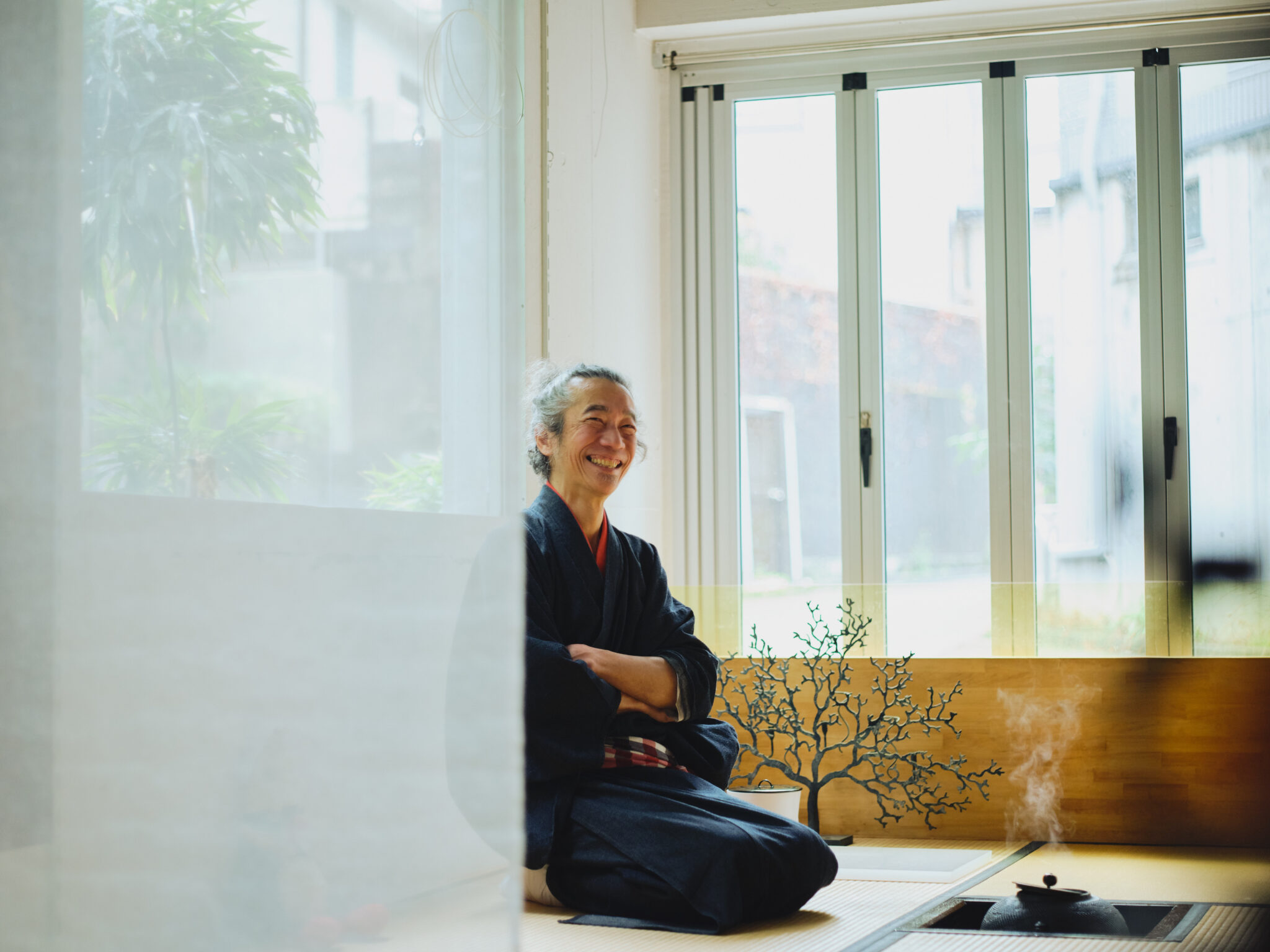“There are a lot of ways to incorporate play into the world of tea if you want.”
Soushou Ishizawa is a tea ceremony master.
Natural light fills his glass-enclosed tearoom, the Ikitsugian.
Soushou is Ishikawa’s tea name. Soushou is a name that is only given to those who are officially recognized instructors of the Urasenke School of tea.
Perhaps some people will recognize him as Shoichi Ishikawa, the artist and head of the group, Ossu! Shugeibu, a club where members enjoy making crafts together.
Tea is one of Japan’s most popular shikohin products.
Shikohin are products that do not have any nutritional benefit and are not a necessity for the body or maintaining life. Nonetheless, various kinds of shikohin are enjoyed around the world.
Perhaps shikohin experiences are a necessary part of what makes us human.
Contemplating shikohin and its experiences is one way to approach the question of what it means to be human and what humans need to survive in this world. Tea master, designer, and head of Ossu! Shugeibu, Ishikawa expresses himself through various works and arts. In this interview we will find out what shikohin means to him.
(Text: Rena Kure Photo: Eichi Tano Edit: Neko Sasagawa)
Realizing the appeal of Japanese culture in Paris
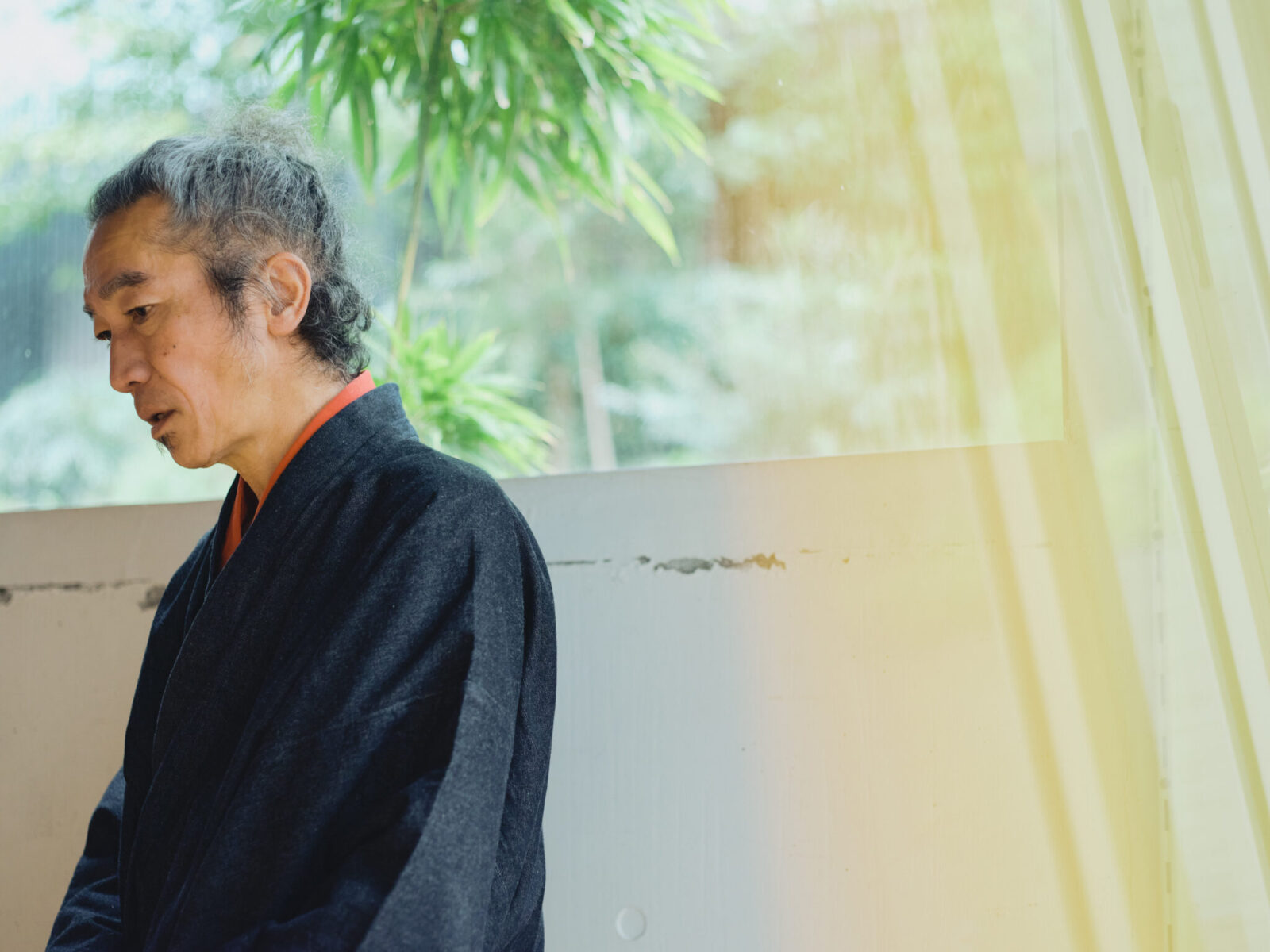
—— You are a tea master, head of the group Ossu! Shugeibu and a designer of clothes and accessories. At first glance, they all seem to be very different genres.
To me they are all connected.
I don’t think I would have started Ossu! Shugeibu if I did not practice Japanese tea.
I used to play volleyball in high school and I went on to study at the Nippon Sport Science University. At one point I realized I did not want to become a PE teacher and dropped out of that school to study fashion at Bunka Fashion College in Tokyo.
I was interested in European culture so I moved to Paris when I was about 25~26 years old and lived there for one year. I made my living by working at Tokyo fashion events.
While I was in Paris I started to realize that Japanese culture is actually pretty cool and appealing and I wanted to learn more about it.
After I returned to Japan, I happened to meet a woman who was taking lessons in Japanese tea ceremony. I asked her if I could join her once, and that was the beginning of my journey with Japanese tea.
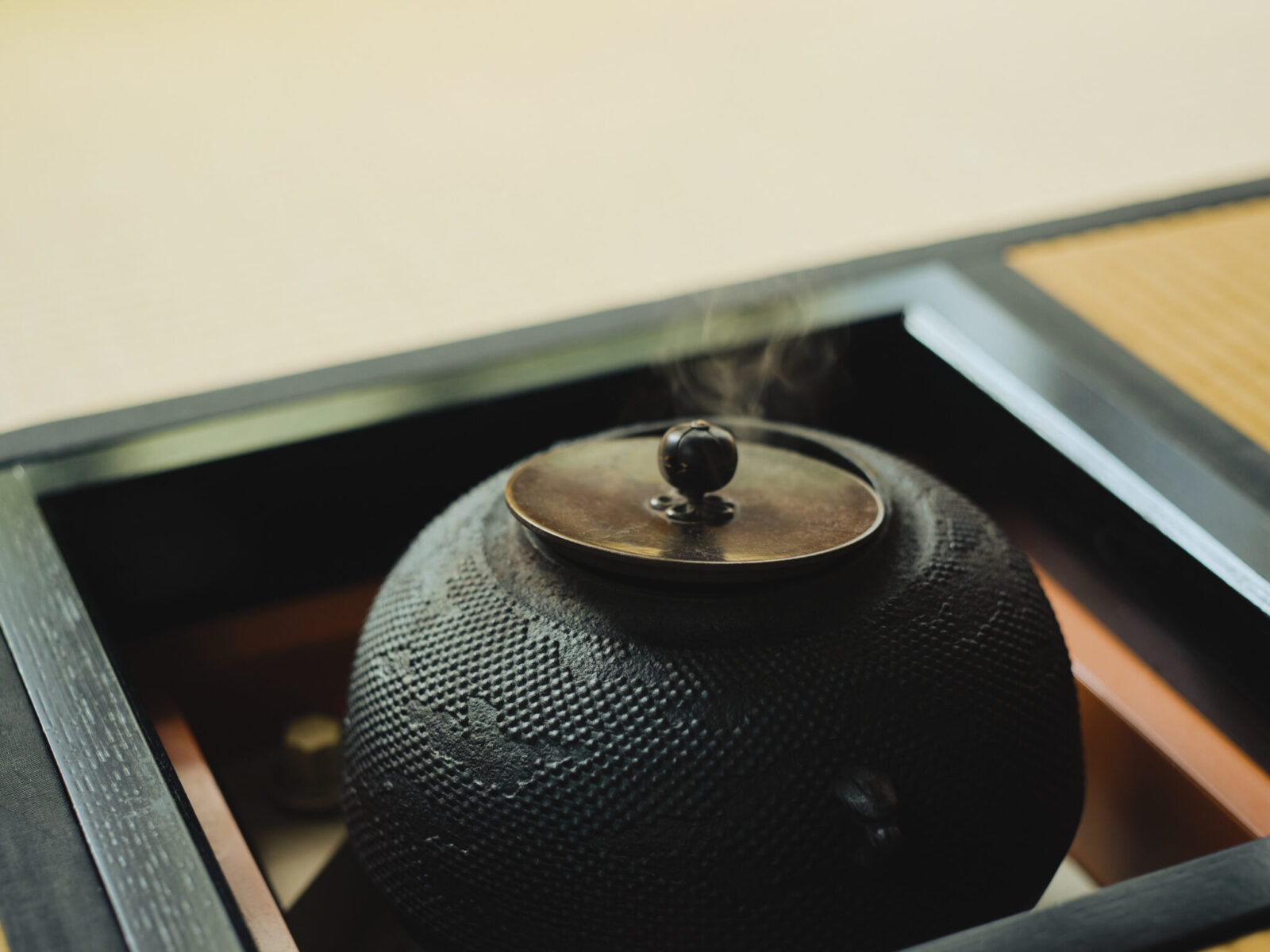
—— You began practicing Japanese tea after returning from Paris? After working in the world of fashion, what did you think of the world of tea?
Unlike my initial misconception, I found that a lot of freedom is allowed in the world of Japanese tea.
As I started learning more, my desire to express different things through Japanese tea began to grow.
I was excited to think about how I could express Japanese tea, not as a traditional Japanese art form, but as Ishikawa Shoichi.
However, I did not have the skills, knowledge or experience at the time so I was not very confident about it.
I was afraid that if I did not learn it properly, it would look like a cheap rendering of only the shape and surface of the art.
While I was thinking this I realized that although it was too soon for me to express myself through Japanese tea, I had enough experience and skill in crafts to teach other people and do anything with it. So I decided that I would try expressing myself through crafts first.
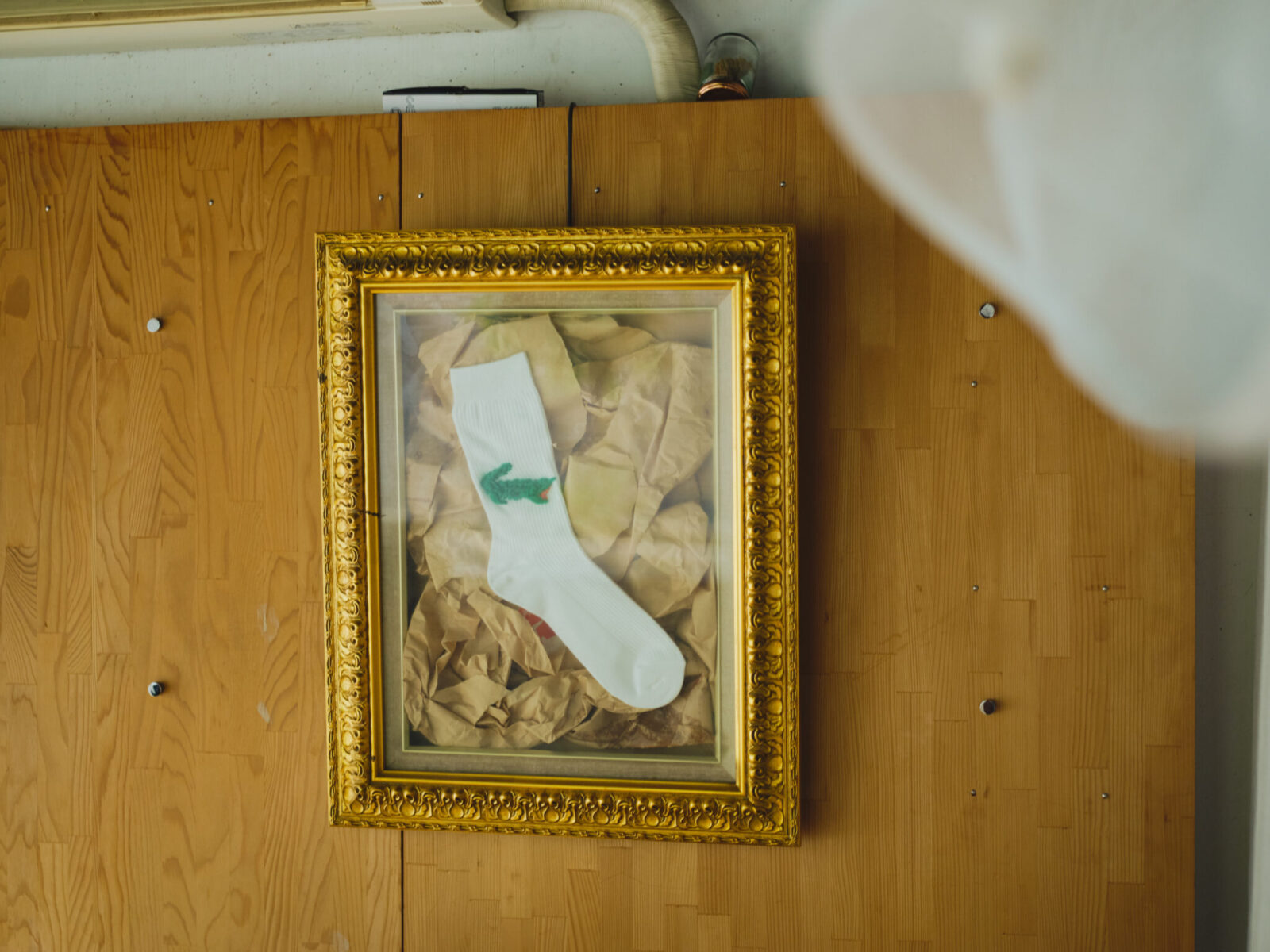
How to enjoy crafts without judgment
—— So the Ossu! Shugeibu club was founded as you were exploring the expression of self through Japanese tea. It’s true that the members of the club are all expressing themselves freely through crafts.
When we are children, we all enjoy the pure joy that comes from making crafts.
However, as we start going to kindergarten, elementary school, and middle and high school, we start to get graded and judged on whether our crafts are “good or bad”. I think it is a real shame that many people start to think that they are bad at something and therefore give up on creating arts and crafts.
The Ossu! Shugeibu club members include some creators, such as a hair and make-up artist, but I mostly gathered a group of people who had “given up” on creating things.
I asked them, “Wouldn’t it be fun to create things without being judged on whether it is good or bad?”
Our unique sensibilities and individuality is what is important. There is no “good or bad” in terms of sensibilities and individuality.

—— When did you start the Ossu! Shugeibu club?
It was in 1998, when I was 35 years old.
When I first started Ossu! Shugeibu there was still a strong stereotype that crafts were for women. I remember talking to a publisher about how the crafts section of the bookstore is very feminine, with pink and red colors.
That’s when I came up with the name Ossu! Shugeibu. At the time, there was a popular manga called Ossu! Karatebu, so I liked the idea of adding “Ossu!” (a kind of boyish greeting).
Once the name was decided I invited my drinking buddies to join the club to do crafts together. The first craft we made at the club was an amigurumi (crocheted stuffed dolls).

—— It’s so cute!
Amigurumi is simple crocheting so you don’t need to be skilled at sewing or knitting. The doll’s shape is completed by connecting the crocheted parts together.
I thought that this is a craft that our club members can enjoy even without prior experience.
When we made it for the first time at our club I was surprised to find that everyone was very good at it. I was so impressed that I took a few dozen and held an exhibition.
We all went to Yuzawaya (a crafts shop) and picked out the yarn of our liking. Then we crocheted and created shapes that we liked. I could see that the club members really enjoyed it and they got really excited.
That made me happy and it motivated me to continue the Ossu! Shugeibu club.
Now, the club has been active for more than 20 years. In 2011 we held an exhibition at The 21st Century Museum of Contemporary Art in Kanazawa that attracted the third largest number of visitors for that museum at the time.
We have held workshops all around and anyone who participates once is considered a member, so now we have over 1000 members.

The world of Japanese tea has many playful aspects
—— After starting the Ossu! Shugeibu club, when did you start wanting to express yourself through Japanese tea?
In 2011, when I was 48 years old, I was asked by the editors of the Urasenke tea magazine Nagomi to perform a tea ceremony to feature in an article. They specifically wanted a male to perform the ceremony. This inspired me to start expressing myself through Japanese tea.
Since most of the guests I would invite were artists, naturally they would not come wearing kimonos. So I thought it would be boring to hold a “regular” tea ceremony.
I decided to draw a pigeon on the windows of Ikitsugian with a bubbly winder cleaner.
As time passed the bubbles would drip down the window and I had the guests enjoy watching that while I served tea.

A part of Japanese tea is enjoying the passing of time.
One watches time passing in the blooming of the flowers arranged in the tokonoma (decorative space in the tatami room), or in the movement of the light that shines into the tea room. I expressed the passing of time with window washing spray.
—— A pigeon made out of window washing spray! What a unique idea.
There are a lot of ways to incorporate play into the world of tea if you want.
There is a story about how Hechikan, a disciple of Sen no Rikyu, invited Sen no Rikyu to a tea ceremony in his home and dug a pitfall in front of the entrance to the garden.
Hechikan prepared a bath and his idea was to have Sen no Rikyu freshen up in the bath, after falling in the pit, before enjoying tea.
Rikyu did fall into the pitfall, but the story goes that he said “I knew that there was a pitfall there, but I thought it would be impolite of me if I did not fall into it and abide by Hechikan’s hospitality.”
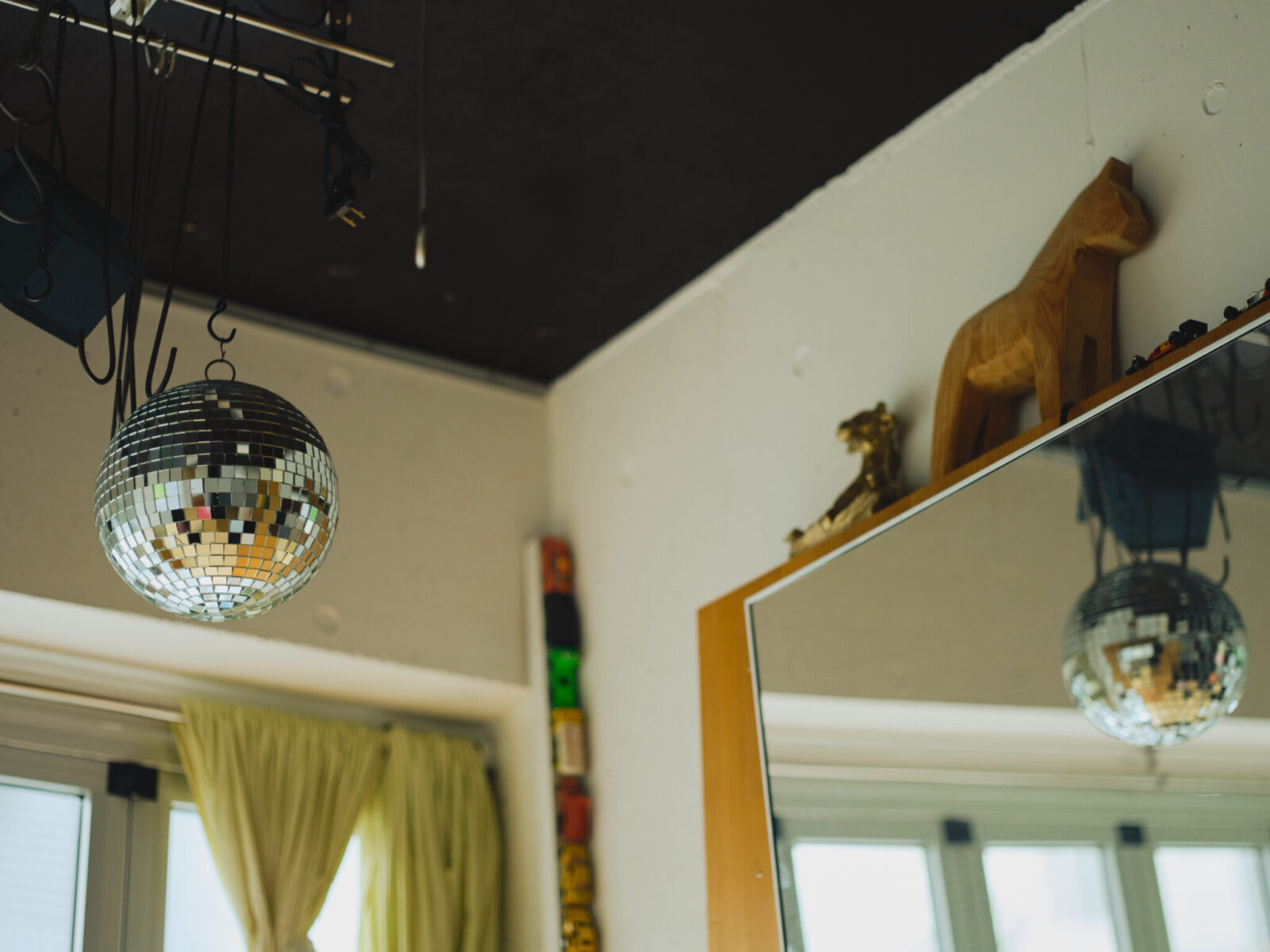
—— So pitfalls are allowed in tea ceremonies.
It is okay to have various aspects of play in tea ceremonies.
However, the play cannot go beyond certain boundaries or the big picture. If it goes beyond certain boundaries, it will be considered deplorable or ignorant.
Learning what those boundaries are and understanding the bigger picture is why one must take lessons and study the art first.
I still take lessons from a senior tea master, and that master is still learning under another senior teacher.
People who are called masters or teachers are still studying under someone else.
Senior tea masters are also expressing themselves and exploring freely. That is what makes the Japanese tea ceremony so cool.
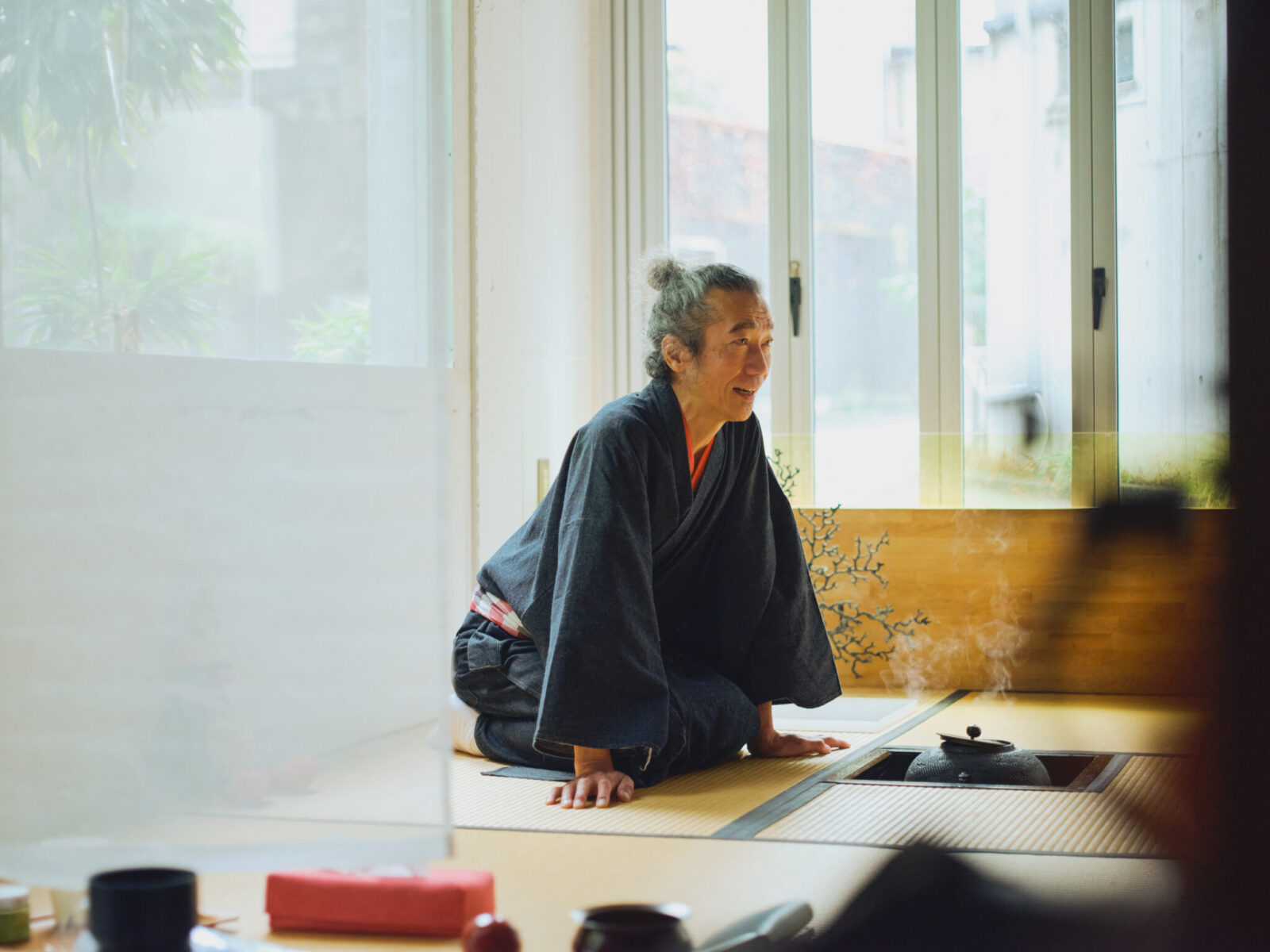
—— So you take lessons and practice in order to see the bigger picture and you learn to express yourself within the appropriate boundaries?
Although it may sound abstract, the boundaries are not set in stone and they can be expanded.
There are still a lot of things I don’t know. The more I learn, the more my boundaries expand.
Perhaps using the term “fence” will be easier to visualize than the word boundary.
It is not cool to jump over a fence with no understanding of why it is there, but it is fun to push the fence and expand it.
It is okay if the fence is broken or rotting away from rain and tear. You can fix the fence, or you can leave it in its decaying state.
I think it’s cool to be able to understand that a boundary once existed there.

—— So one must look and try to understand why the fences and boundaries exist. I think it is similar to how we should study history and culture.
There are times when I jump over a fence and find myself on the other side without realizing.
When I look back and realize that there was a fence there, I regret making such a rash move.
Let’s say you draw a quick line on a tatami with your finger. It makes you see a borderline there now, doesn’t it?
There are many such rules in the world of Japanese tea.
This is a world that cannot be explained in words, and perhaps it is not necessary to explain in words.

The tea ceremony is like a live concert. You prepare to perfection and then let loose.
—— What do you think is important when you are expressing yourself through a tea ceremony?
Of course I think that flow is important when I perform a tea ceremony, but I especially pay attention to the shape and movement of my hands and how to create beauty in the pauses between movements.
Perhaps it is like figure skating. It is important to skate beautifully.
The way I serve tea and create pauses changes according to the guests in the tea room as I pick up on their emotions. One must think about how the guests can enjoy the time we are spending together.
There is an aspect of the tea ceremony that is similar to a live concert.
In order to entertain the guests, I prepare a script in advance but if that script is too set in stone, it will create an awkward and rigid atmosphere.
You have to let loose to some extent to not make it awkward.

Everything from the weather, the way the water for the tea is boiling, the sweets and food are part of the tea ceremony. The tea room is a space that the guests and the host who is serving tea create together.
The host must prepare his mindset perfectly in advance, but it is necessary to leave room for flexibility.
If it is the first time a guest is experiencing the tea ceremony, the host must keep in mind that they may be nervous. The guest should also be able to say, “This is my first time so please teach me about the ceremony.”
That is how the moments of enjoying tea in the tea room begins.
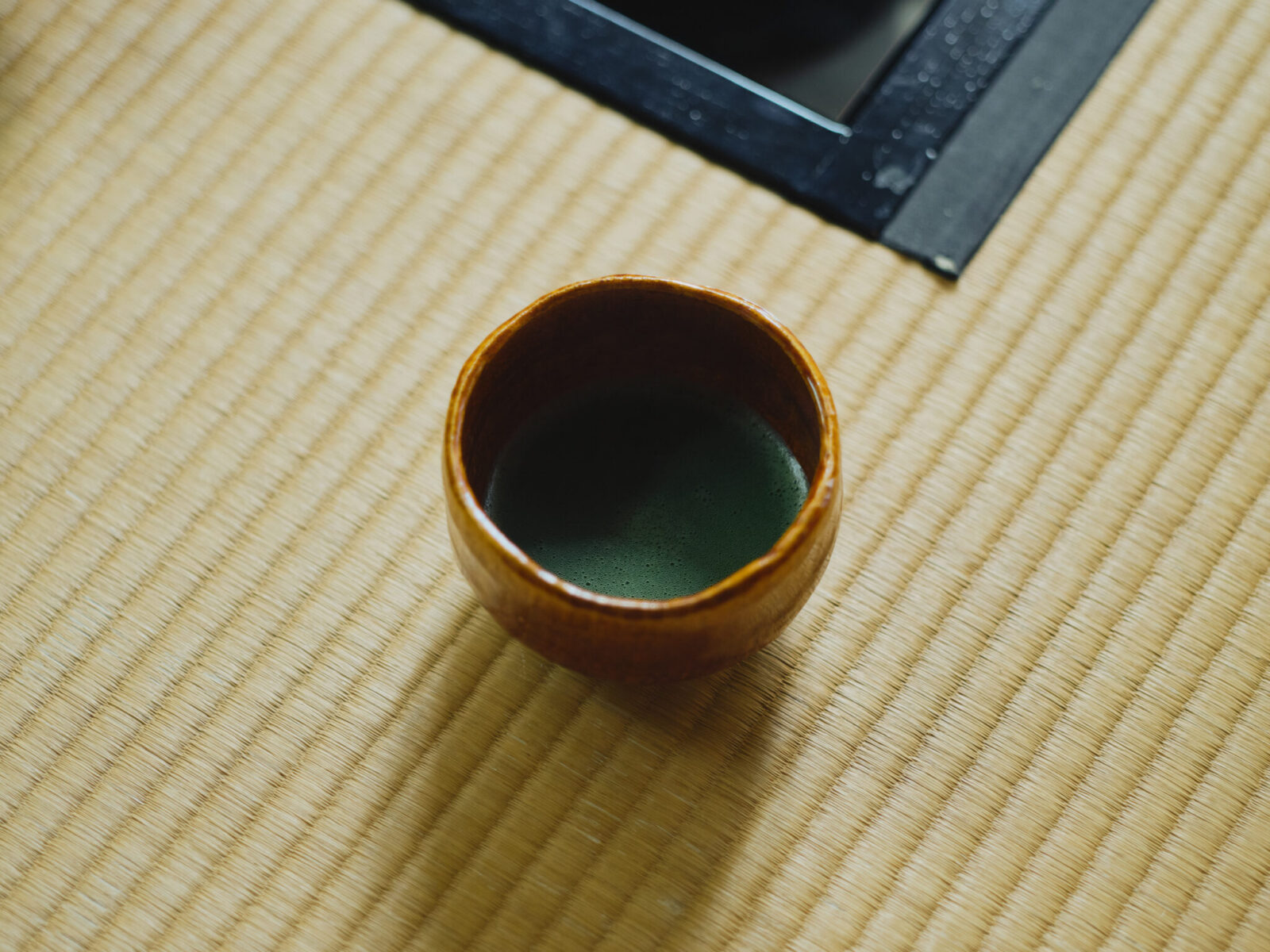
Connecting with predecessors through tea and passing it on to the next generation
—— I often envision artists as working alone to express their unique worldview, but whether it is through the Ossu! Shugeibu club or the Ikitsugian, you are always working with others to create artistic spaces and crafts.
Well, Ossu! Shugeibu is a club after all.
And a club is something you enjoy with a group.
Of course, there are times when I work in solitude to pursue minute details that cannot be shared with anybody else, but that is the designer side of me.
The tea ceremony is not like this.
It is not something that you learn and practice alone, but something that is taught to you by your seniors.
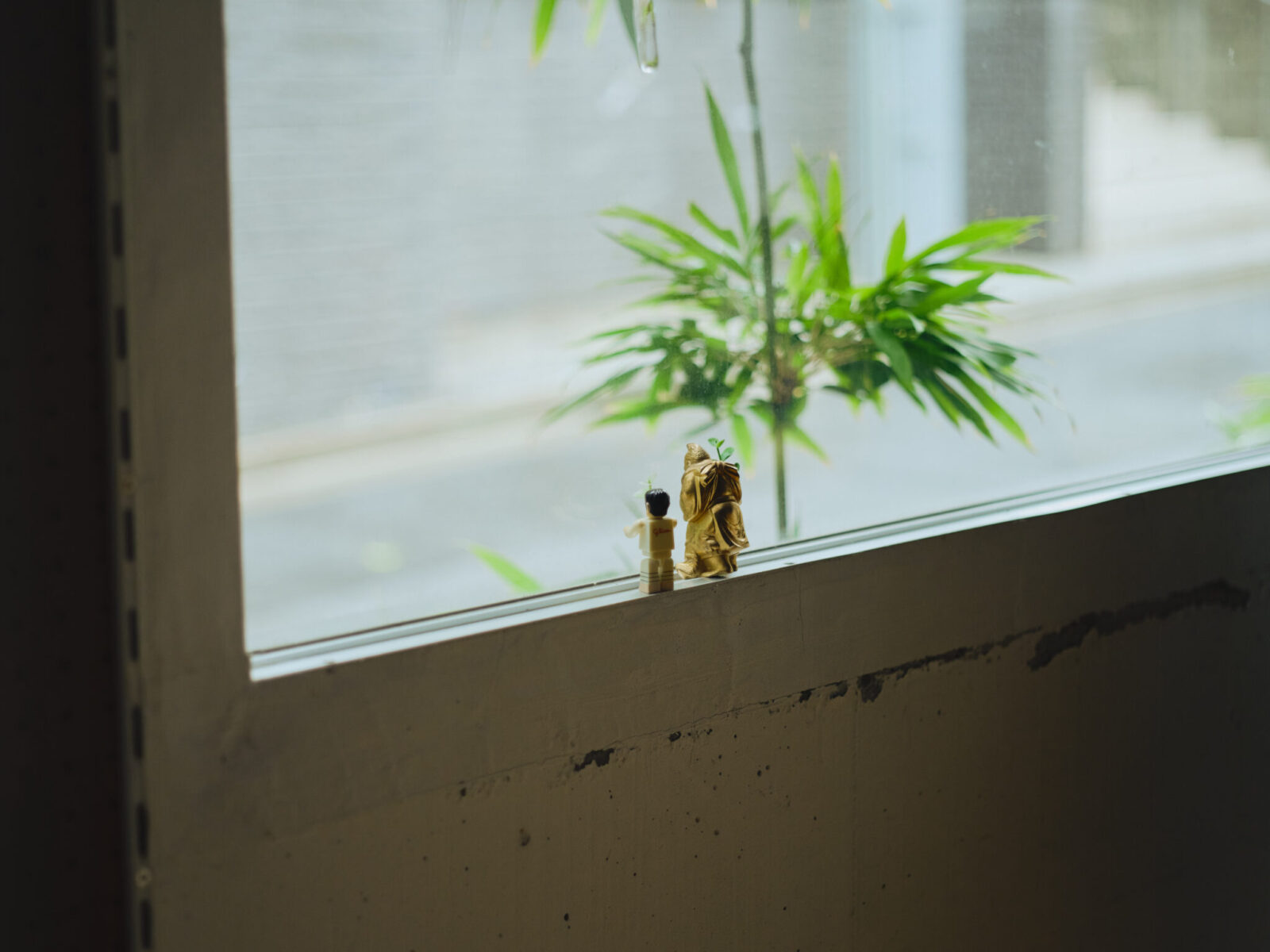
—— So for you, expression through tea is something that comes from being and working with others.
The fact that there are so many predecessors is what makes it so interesting.
Leonardo da Vinci and Sen no Rikyu are our predecessors.
We are practicing art under them.
There is a lot to learn and feel when we study the lives of our predecessors, even if many of them are deceased.
—— Does Japanese tea allow you to connect with such historic creators?
One senior who has always looked after me was Shigeru Uchida.
He also practiced the Japanese tea ceremony and had a deep understanding of it.
When I was young he always welcomed me and was a key person in my life.
I have many other senior people who are important to me.
My hope is to take what I have learned from these very cool seniors, absorb it through my own filter, and pass it on to the next generation.
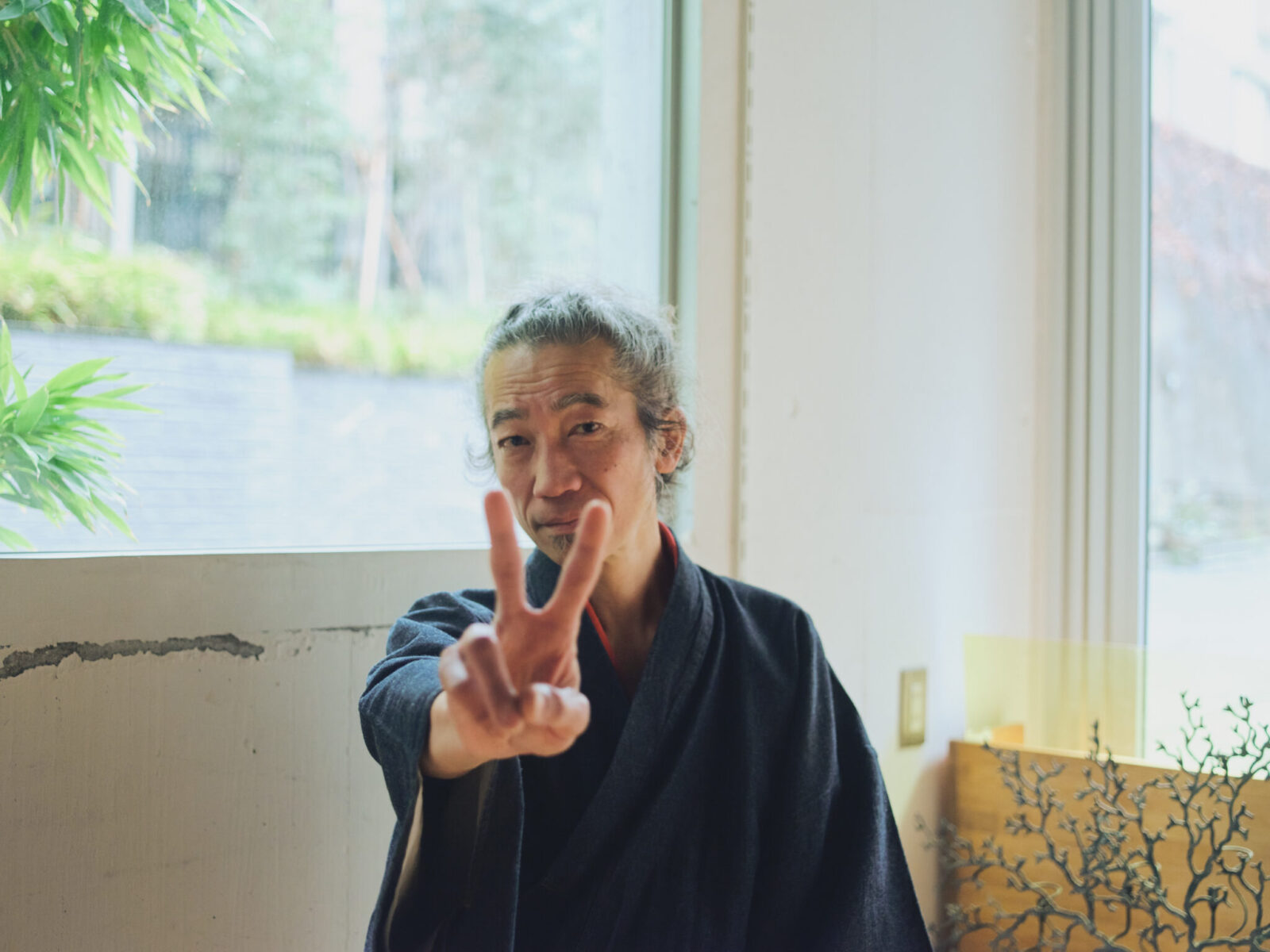
All articles on our feature Indulgence and Explore
Translation : Sophia Swanson
Editor / Writer. A freelance editor. Born in Yokohama and based in Kyoto. Associate editor of the free magazine “Hankei 500m” and “Occhan -Obachan”. Interests include food, media and career education programs such as “Internships for Adults”. Hobby is paper cutting.
Editor and creator of the future through words. Former associate editor of Huffington Post Japan. Became independent after working for a publishing company and overseas news media. Assists in communications for corporates and various projects. Born in Gifu, loves cats.
